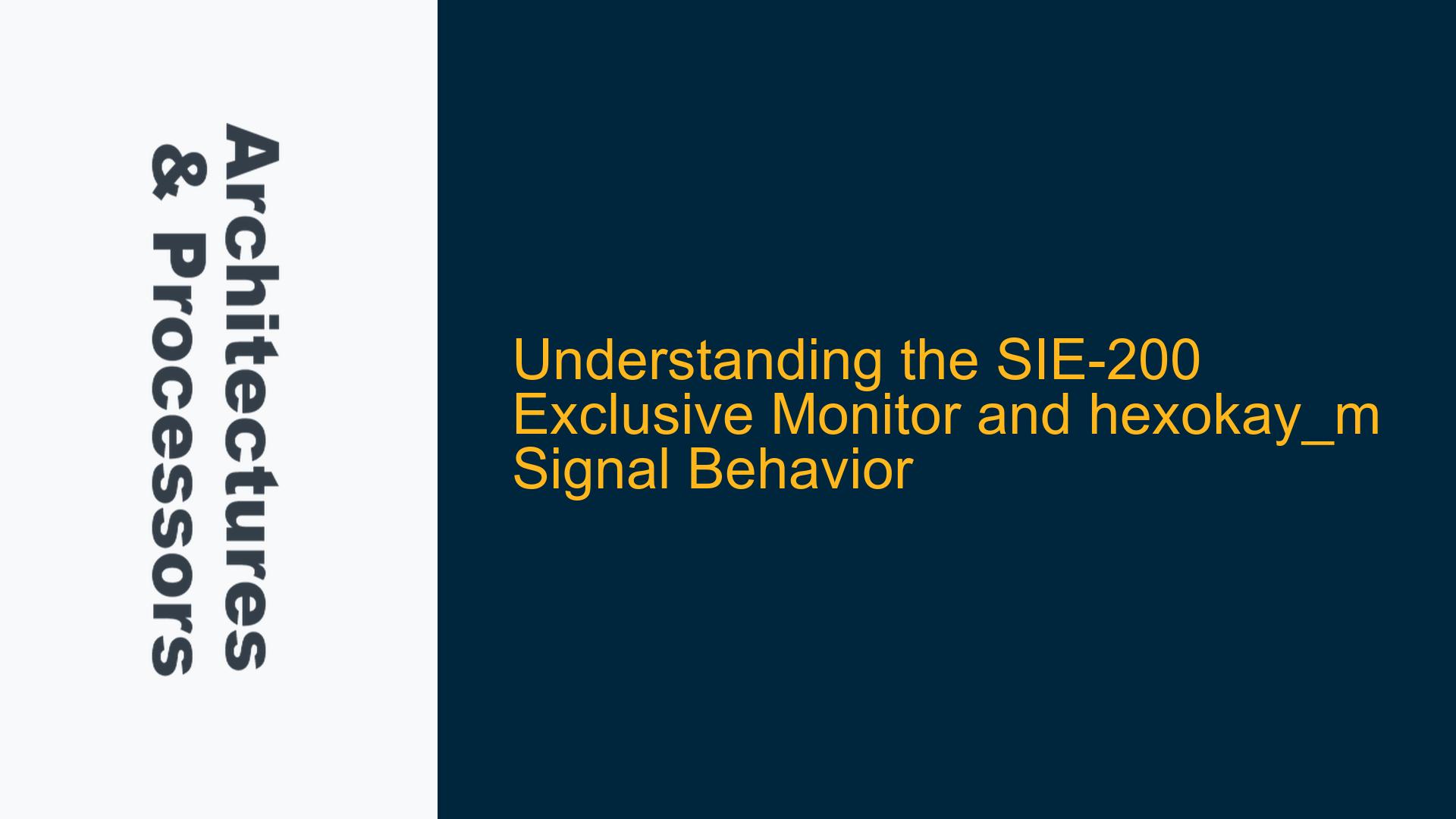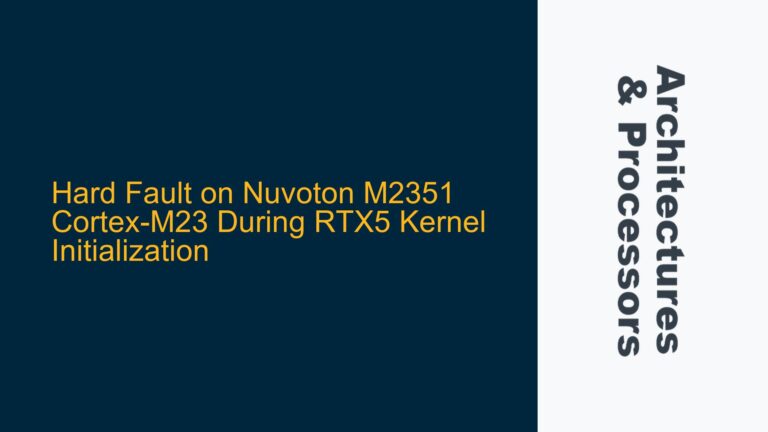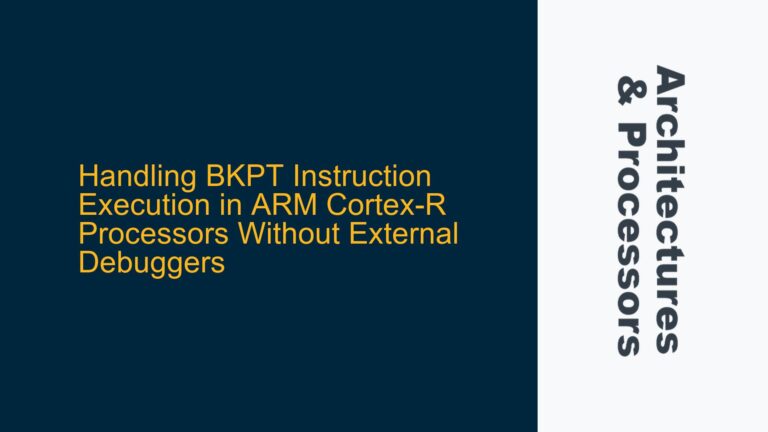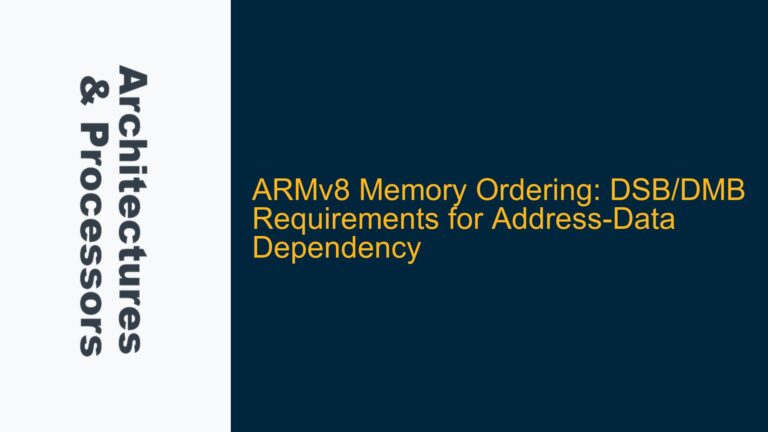ARM CoreLink SIE-200 AHB5 Exclusive Access Monitor Overview
The ARM CoreLink SIE-200 System IP is a highly configurable and scalable interconnect solution designed for embedded systems. One of its key features is the AHB5 exclusive access monitor, which plays a critical role in managing exclusive access operations in multi-master systems. Exclusive access is a mechanism that allows a master to perform atomic read-modify-write operations, ensuring data integrity in shared memory regions. The AHB5 protocol, an evolution of the AHB protocol, introduces enhancements to support exclusive access more efficiently.
The AHB5 exclusive access monitor in the SIE-200 is responsible for tracking exclusive access requests and ensuring that the exclusivity conditions are met. It does this by monitoring the HEXOKAY signal, which indicates whether an exclusive access operation has been successful. The HEXOKAY signal is typically driven by the slave or memory controller and is used to inform the master about the status of the exclusive access.
In the context of the SIE-200, the hexokay_m signal is an input to the AHB5 exclusive access monitor module. This signal is crucial because it provides feedback to the monitor about the success or failure of an exclusive access operation. However, the integration of this signal can be challenging, especially when external devices do not generate the hexokay_m signal explicitly. This raises the question of whether the hexokay_m signal can be tied to a constant value, such as 0, in scenarios where the external device does not provide this signal.
Implications of Tying hexokay_m Signal to 0 in SIE-200 Integration
Tying the hexokay_m signal to 0 in the SIE-200 integration has significant implications for the behavior of the AHB5 exclusive access monitor. When hexokay_m is tied to 0, it effectively disables the feedback mechanism that the exclusive access monitor relies on to determine the success of an exclusive access operation. This can lead to several potential issues, including incorrect handling of exclusive access requests, data corruption, and system instability.
The hexokay_m signal is used by the AHB5 exclusive access monitor to validate the exclusivity of a transaction. When a master initiates an exclusive access, the monitor tracks the transaction and waits for the hexokay_m signal to indicate whether the operation was successful. If hexokay_m is tied to 0, the monitor will always interpret the exclusive access as unsuccessful, regardless of the actual state of the memory or the success of the operation. This can cause the monitor to incorrectly flag exclusive access operations as failed, leading to unnecessary retries or errors in the system.
Furthermore, tying hexokay_m to 0 can also impact the performance of the system. Exclusive access operations are often used in scenarios where low-latency and high-throughput are critical, such as in real-time systems or multi-core processors. If the exclusive access monitor is unable to accurately track and validate exclusive access operations, it can lead to increased latency and reduced throughput, as the system may need to retry failed operations or resort to less efficient synchronization mechanisms.
In addition to these functional and performance implications, tying hexokay_m to 0 can also complicate the verification and debugging process. Without accurate feedback from the hexokay_m signal, it becomes difficult to diagnose issues related to exclusive access operations. This can make it challenging to identify and resolve problems during the integration and verification phases of the SoC design.
Proper Handling of hexokay_m Signal in SIE-200 Integration
To ensure the correct operation of the AHB5 exclusive access monitor in the SIE-200, it is essential to properly handle the hexokay_m signal. This involves understanding the role of the signal in the exclusive access mechanism and implementing the necessary logic to generate or manage the signal appropriately.
The hexokay_m signal should be driven by the external device or memory controller that is responsible for managing the memory region being accessed. This device should generate the hexokay_m signal based on the success or failure of the exclusive access operation. For example, if the memory controller successfully completes an exclusive write operation, it should assert the hexokay_m signal to indicate that the operation was successful. Conversely, if the operation fails, the hexokay_m signal should be deasserted.
In cases where the external device does not generate the hexokay_m signal, it may be necessary to implement additional logic to simulate the behavior of the signal. This can be done by monitoring the memory access patterns and determining whether the exclusivity conditions are met. For example, if the memory controller detects that a memory region has been accessed by another master during an exclusive access operation, it can deassert the hexokay_m signal to indicate that the operation has failed.
Another approach is to use a default value for the hexokay_m signal that aligns with the expected behavior of the system. For instance, if the system is designed such that exclusive access operations are always expected to succeed, the hexokay_m signal can be tied to 1. However, this approach should be used with caution, as it can mask potential issues in the system and lead to incorrect behavior in scenarios where exclusive access operations may fail.
In addition to generating the hexokay_m signal, it is also important to ensure that the signal is properly synchronized and meets the timing requirements of the AHB5 protocol. This involves verifying that the signal is stable and valid at the appropriate times during the exclusive access operation. Failure to meet these timing requirements can result in incorrect behavior of the exclusive access monitor and lead to system instability.
Finally, it is crucial to thoroughly verify the behavior of the hexokay_m signal and the AHB5 exclusive access monitor during the SoC integration and verification process. This can be done using simulation and formal verification techniques to ensure that the exclusive access mechanism operates correctly under all possible scenarios. By properly handling the hexokay_m signal and verifying its behavior, designers can ensure the correct operation of the SIE-200 and avoid potential issues related to exclusive access operations.
Conclusion
The hexokay_m signal plays a critical role in the operation of the AHB5 exclusive access monitor in the ARM CoreLink SIE-200 System IP. Proper handling of this signal is essential to ensure the correct behavior of the exclusive access mechanism and to avoid potential issues such as data corruption, system instability, and performance degradation. By understanding the implications of tying the hexokay_m signal to 0 and implementing the necessary logic to generate or manage the signal, designers can ensure the successful integration of the SIE-200 in their SoC designs. Additionally, thorough verification of the hexokay_m signal and the exclusive access monitor is crucial to identify and resolve any issues during the design and verification process.






